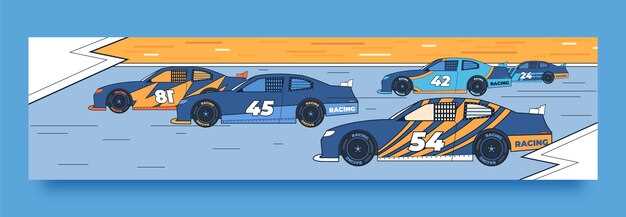
The world of street racing has long been entwined with the evolution of automotive personalization and performance enhancement, commonly known as tuning. From the clandestine gatherings in empty parking lots to adrenaline-fueled highway sprints, street racing has established a unique subculture that not only celebrates speed but also serves as a canvas for self-expression through car modifications.
Street racing acts as a catalyst for innovation in the tuning scene. As racers push their vehicles to the limit, they seek ways to enhance performance, often leading to the development of new technologies and techniques in vehicle modification. The pursuit of speed and dominance on the streets drives enthusiasts to experiment with everything from engine upgrades to custom body kits, resulting in a vibrant community dedicated to pushing the boundaries of automotive engineering.
Moreover, the cultural exchange facilitated by street racing has played a pivotal role in shaping the tuning landscape globally. What began as a localized phenomenon has blossomed into a worldwide movement, inspiring countless car enthusiasts to embrace unique styles and performance standards. This exchange not only fosters camaraderie among racers but also influences manufacturers and aftermarket suppliers to adapt to the evolving demands of a passionate audience.
The Role of Competition in Shaping Tuning Trends
The landscape of tuning culture has been heavily influenced by the thrill of racing. As enthusiasts push their vehicles to the limit, the quest for speed and performance drives innovations in car modifications. Competitions, whether formal or informal, act as a catalyst for these advancements, encouraging tuners to experiment with various upgrades.
Street racing serves as a primary arena where tuning trends emerge and evolve. Participants constantly seek ways to gain an edge over their rivals, leading to an arms race of modifications. Every race highlights the need for enhancements in engine performance, suspension systems, and aerodynamics. As a result, certain tuning trends gain popularity rapidly, as successful strategies are replicated by others eager to improve their chances of victory.
The competitive nature of racing also fosters a community of tuners who share ideas and techniques. Online forums and local meetups become vibrant platforms for discussing tuning challenges and breakthroughs. Innovative modifications, once exclusive to winning cars, often find their way into the mainstream as tuners record their experiences and successes. This sharing of knowledge not only accelerates the evolution of tuning trends but also democratizes access to high-performance modifications.
Moreover, the rivalry between different car brands and models spurs the creation of specialized tuning packages aimed at maximizing speed and efficiency. Companies focused on aftermarket parts often tailor their offerings to the demands of street racers, leading to the development of products designed specifically for competitive scenarios. This dynamic ensures that tuning trends remain agile, adapting quickly to emerging racing technologies and styles.
In summary, competition plays a pivotal role in shaping tuning trends within the automotive community. The need to outperform rivals fosters innovation and collaboration, resulting in a vibrant culture that continuously evolves. As racing pushes the boundaries of vehicle performance, tuning becomes a vital aspect of this exciting ecosystem, further cementing its influence in the automotive world.
Impact of Street Racing on Vehicle Customization Techniques

Street racing has profoundly shaped vehicle customization techniques, creating a culture that prioritizes performance, aesthetics, and individuality. The pursuit of speed and style in unsanctioned racing environments has driven enthusiasts to explore innovative tuning methods to enhance their vehicles’ capabilities.
One of the most significant impacts of street racing is the focus on engine modifications. Tuners frequently upgrade components such as turbochargers, exhaust systems, and intake manifolds to boost horsepower and torque. These enhancements not only improve acceleration but also create a distinctive sound that resonates with racing culture.
Suspension tuning is another critical area influenced by street racing. To achieve better handling and stability at high speeds, racers often lower their cars and install performance shocks and struts. This not only improves the vehicle’s aerodynamics but also enhances cornering efficiency, allowing drivers to navigate tight turns with confidence.
Moreover, the aesthetic aspects of vehicle customization cannot be overlooked. Street racing has fostered a trend towards unique body kits, vinyl wraps, and eye-catching paint jobs. These visual modifications serve to express individuality while also signaling a vehicle’s racing heritage.
Wheels and tires also play a crucial role in both performance and style. Racing enthusiasts often select lightweight wheels to reduce overall mass and improve acceleration, while high-grip tires enhance traction during races. This meticulous attention to detail reflects the broader tuning culture that values both functionality and appearance.
Finally, the community aspect of street racing has encouraged knowledge sharing and collaboration among tuners. Online forums and local meet-ups facilitate the exchange of ideas, techniques, and parts, further fueling innovation within the customization landscape.
In summary, street racing has significantly influenced vehicle customization techniques through a focus on performance upgrades, aesthetic enhancements, and community collaboration. This dynamic interplay between racing and tuning continues to evolve, shaping the future of automotive culture.
The Evolution of Aftermarket Parts Driven by Street Racing

The street racing scene has significantly influenced the development of aftermarket parts over the decades. This underground culture, often characterized by its competitive nature and a desire for speed, has necessitated the creation of performance-enhancing components that allow vehicles to stand out on the streets. Enthusiasts and racers sought ways to improve their cars’ capabilities, leading to an explosion in the aftermarket industry.
Initially, the demand for aftermarket parts was primarily driven by a need for more power and speed. Engine modifications, such as turbochargers and high-performance exhaust systems, became staples among street racers looking to gain an edge. As technology advanced, manufacturers began to specialize in producing parts that not only enhanced performance but also adhered to the aesthetic preferences of car enthusiasts. This dual focus on functionality and style catalyzed a massive growth in the variety of available aftermarket components.
Suspension upgrades emerged as another focal point in the evolution of aftermarket parts, allowing racers to enhance handling and stability during high-speed runs. Street racers increasingly turned to adjustable coilovers and performance sway bars to achieve the perfect balance and responsiveness on the streets. This shift towards improved handling and control reflected a deeper understanding of racing dynamics, emphasizing that speed alone is not enough without adequate stability.
The rise of the internet further accelerated the evolution of aftermarket parts, enabling a community-driven exchange of information and experiences. Online forums and social media platforms allowed racers to share their modifications, leading to the proliferation of specialized parts tailored to the unique needs of street racing. This collaborative atmosphere fostered innovation, with manufacturers seeking to create products that resonated with the racing community.
Today, the aftermarket parts industry continues to thrive, propelled by the enduring influence of street racing. Innovations in materials and manufacturing processes have led to lighter, stronger components that enhance vehicle performance without compromising safety. The merging of technology with automotive passion ensures that as long as street racing exists, the evolution of aftermarket parts will continue to progress, shaping the culture for generations to come.




